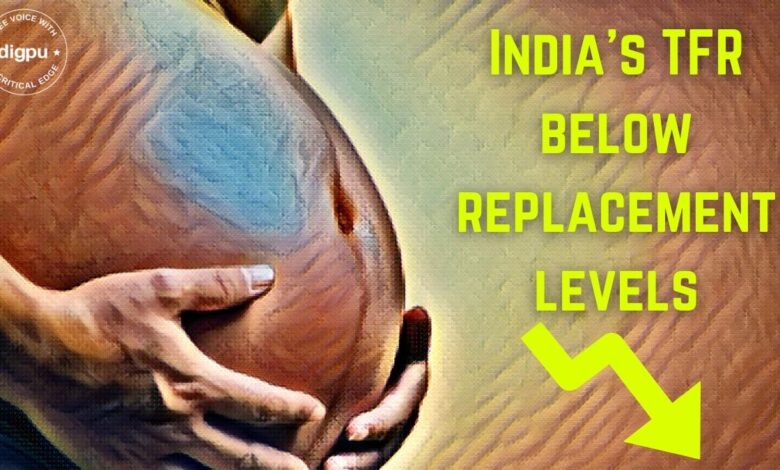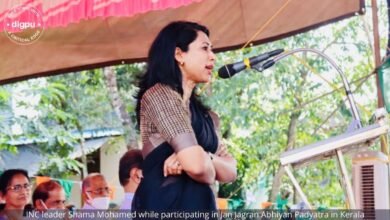India’s TFR below fertility replacement rate, as per NFHS-5 statistics

The National Family Health Survey (NFHS) is a multi-round, large-scale survey performed across India on a representative sample of families
According to statistics from the Ministry of Health and Family Welfare’s National Family Health Survey (NFHS), the country’s total fertility rate (TFR) has seen an undesired decline.
The country’s total fertility rate was 2.2 when the NHFS-4 was conducted but as per the latest NFHS-5, the TFR is now 2.0. As a result, the TFR is now below the fertility replacement threshold of 2.1.
Only five states have fertility levels above the replacement rate, which include Bihar (2.98), Meghalaya (2.91), Uttar Pradesh (2.35), Jharkhand (2.26), and Manipur (2.17).
Fertility rate among Muslims sees the sharpest drop
When the data is examined as per the various religious communities in the country, the fertility rate among Muslims has dropped the most over the last two decades.
The community’s fertility rate fell to 2.3 in 2019-2021 from 2.6 in 2015-16, continuing the declining trend witnessed over the years. While all religious communities have seen a drop in fertility, leading to a drop in the country’s total fertility rate, the Muslim community has seen the biggest drop, from 4.4 in NFHS 1 (1992-93) to 2.3 in NFHS 5 (2019-2021).
Muslims’ fertility rate still highest among all communities
The Muslim community’s fertility rate, on the other hand, remains the highest among all religious communities.
The Hindu community has a fertility rate of 1.94, the Christian community 1.88, the Sikh community 1.61, the Jain community 1.6, and the Buddhist and neo-Buddhist community 1.39, which is the lowest rate in the country, according to NFHS 5.
Both rural and urban regions see in decline of fertility rates
In rural regions, the overall fertility rate has dropped from 3.7 children per woman in 1992-93 to 2.1 children in 2019-21.
Women in urban areas had fewer children, dropping from 2.7 children in 1992-93 to 1.6 children in 2019-21.
Education, economic progress leads to reduced fertility rates
According to the NFHS 5 study, the number of children per woman decreased as women’s education levels increased. Women without any schooling have an average of 2.8 children, compared to 1.8 for women with school level education.
According to the data, women in the lowest wealth quintile have 1.0 more children than women in the highest wealth quintile, and economic progress leads to reduced fertility rates gradually.
The fertility rate peaks at the age of 20-24 in all NFHS editions, regardless of where you live, and then gradually drops.
Age of marriage as per NFHS-5
The national average of teen marriages has decreased. According to NFHS-5, 23.3 per cent of women married before reaching the legal age of 18 years, a decrease from 26.8% in NFHS-4.
However, underage marriages have surged in several areas, including Punjab, West Bengal, Manipur, Tripura, and Assam.
The states of West Bengal and Bihar have the highest rates of underage marriage in the country. Jammu and Kashmir, Lakshadweep, Ladakh, Himachal Pradesh, Goa, Nagaland, Kerala, Puducherry, and Tamil Nadu have the fewest underage marriages.
Tripura has experienced the highest increase in female weddings under the legal age of 18 while Chhattisgarh has made the most progress in facilitating legal marriages.
Only 56.4 percent utilise contraception for family planning
Contraceptive techniques are nearly well known in India. However, just 56.4 per cent of people utilise contemporary contraception for family planning.
Employed women are more likely to utilise contemporary contraception, the use of which rises in communities and areas where socioeconomic development has been made. Modern contraceptive use rises in tandem with affluence.
It is in place to mention here that the fifth edition of the National Family Health Survey (NFHS) was undertaken between the years 2019 and 2021.
Fertility, infant and child mortality, family planning practice, maternity and child health, reproductive health, nutrition, anaemia, utilisation, and quality of health and family planning services are all covered by the NFHS.
NFHS has two distinct objectives, which include (i) Offering vital health and family welfare statistics for policy and program objectives, and (ii) Informing people about critical new health and family welfare concerns.
The International Institute for Population Sciences (IIPS) Mumbai has been chosen as the nodal agency by the Ministry of Health and Family Welfare (MOHFW) to offer survey coordination and technical advice.







